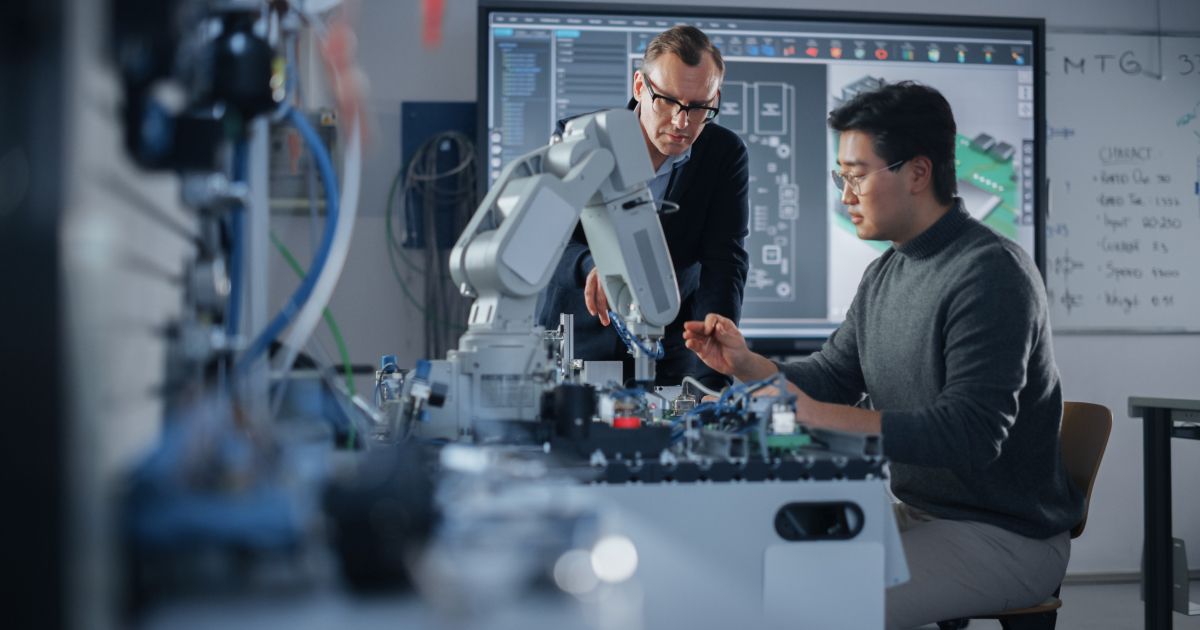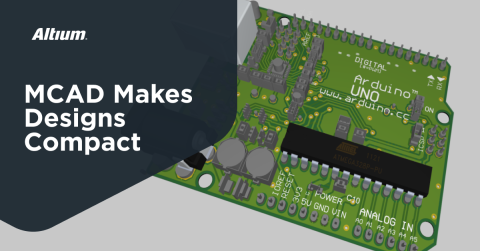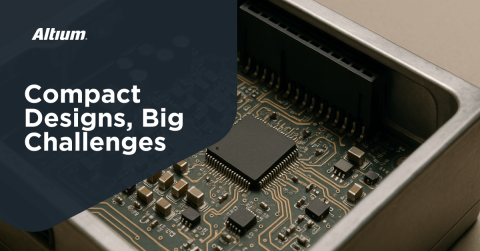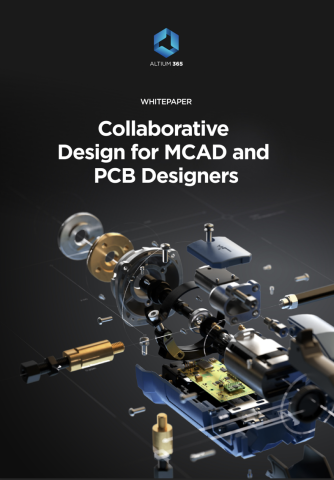Why Mechanical Engineers Struggle With ECAD Collaboration (And How to Fix It)

As a mechanical engineer, you own the form, fit, function, and manufacturability of a product’s final assembly. But as products have become smarter and more connected, the PCB that powers them has transitioned from a simple component to be housed into a complex, 3D subsystem with its own mechanical constraints. Despite links between MCAD and ECAD software, engineering teams still rely on manual data sharing that compromise designs, resembling not just an inconvenience but a systemic failure that injects risk, delay, and frustration into every stage of the development process.
To understand the depth of the problem, you must appreciate the daily reality for an ME integrating a PCB: a world of disconnected data and broken workflows that sometimes lead to catastrophic failures.
The File Exchange Nightmare
The root of the problem is the ‘over-the-wall’ approach, where the electrical team finalizes a PCB layout and throws it to the mechanical team for verification. The primary mechanism for this is the exchange of intermediate files, a process so fundamentally flawed it's the epicenter of the ME's frustration.
- STEP (.stp, .step): The ‘Dumb’ Snapshot. A STEP file is the most common format, but it’s a blunt instrument. It provides a 3D model of the PCB but strips away all underlying design intelligence. Component designators, part numbers, and electrical net information are gone. You receive a collection of solids with no context encoded in the STEP file, making it impossible to do more than a basic interference check. Another problem is the massive size of these files. A minor change, such as relocating a single mounting hole, necessitates re-exporting and re-importing the entire multi-megabyte assembly, resulting in a time-consuming 'stop-and-go' design cycle.
- IDF/IDX (.idf, .idx): A Flawed Fix. The Intermediate Data Format (IDF) and its successor (IDX) were meant to solve STEP's shortcomings but often introduce new problems. Suddenly, you're managing multiple files for the board and component libraries, doubling the risk of version errors. The usability of these files is entirely dependent on the diligence of the EE who created them and the ME that handles them. The internet is filled with forums of MEs complaining about ‘bad IDF files’ with mismatched origins or incorrect hole mapping, forcing you to become a file-fixer instead of a designer.
- DXF (.dxf): 2D in a 3D World. This 2D drawing format is fine for defining PCB layout constraints but is inadequate for electromechanical design of complex systems. It can define a board outline and various board regions, but it contains zero 3D information about component height and carries no design intelligence.
This reliance on file exchange inevitably leads to the complete breakdown of version control. Your local drive becomes a digital graveyard of ambiguously named files like enclosure_v4_final.step, board_from_jane_v3_rev2.idf. Without a single source of truth, the ME and EE are working in parallel universes, almost guaranteeing that their designs are out of sync.
The High Cost of Misalignment
These workflow failures cascade into tangible, high-stakes consequences that impact product quality, budgets, and timelines.
- Physical Failures: The most common result is that the PCB simply doesn't fit. Connectors misalign with openings, tall components collide with the chassis, and mounting holes are off by a fraction of a millimeter. These issues, discovered late in the game, can render an entire batch of expensive, fabricated parts useless.
- Thermal Catastrophes: Effective thermal management requires knowing where heat-generating components and large copper planes are on the PCB. When this critical data is lost in translation, you are designing blind, leading to products that overheat, fail in the field, and damage your company's reputation.
- The Vicious Cycle of Prototypes: In a broken workflow, expensive physical prototypes become the primary method for discovering integration errors. Teams build a prototype, find a flaw, and spin a new version of the board and enclosure. Each cycle adds weeks and tens of thousands of dollars to the budget. You're forced to use costly physical objects to communicate problems that should have been solved in the digital domain.
- The Human Toll: Beyond the balance sheet, a broken process creates a broken culture. With no single source of truth, problems devolve into finger-pointing. The ME blames the EE for a bad STEP file; the EE blames the ME for not reading the email update. This breeds a toxic 'Us vs. Them' mentality, replacing collaboration with adversarial friction and stifling the creative energy needed for true innovation.
The Path to True Co-Design - The Principles of a Real Fix
To permanently solve these problems, a new approach is required, one founded on core principles that address the root causes of failure. True collaboration isn't a manual action you perform; it's a persistent state the design is in.
- Work Natively, Collaborate Globally: Engineers must be allowed to work in the software environment where they are most expert and productive. An ME shouldn't have to learn a complex ECAD tool to check a clearance. The solution must be a seamless bridge between native environments.
- Eliminate the File, Not Just Exchange It Faster: The core failure of every legacy workflow is its reliance on discrete files. A true solution must transcend this paradigm, replacing manual import/export with a direct, bi-directional data link.
- Design Concurrently, Not Serially: The 'wait-your-turn' model must be dismantled. The solution must enable true, simultaneous co-design, where changes can be proposed, reviewed, and accepted from either side at any time.
- Establish a Single Source of Truth: All collaboration must be arbitrated through a central, version-controlled hub that serves as the undisputed record for the project's electromechanical state.
The Fix in Practice: Altium's ECAD-MCAD Codesign
These principles are the foundation of Altium's ECAD-MCAD codesign. It was engineered from the ground up to solve the specific pain points of the mechanical engineer by providing a practical, elegant bridge between the two domains.
The architecture is simple: a lightweight MCAD plugin and the Altium Workspace.
- A Lightweight MCAD Plugin: You start by installing a free plugin for your preferred MCAD tool: SOLIDWORKS, Creo, Inventor, Fusion 360, or Siemens NX. This embeds a codesign panel directly into your familiar interface.
- The Altium Workspace: The plugin communicates directly with an Altium workspace, the cloud platform that acts as the central hub and single source of truth, which your ECAD counterpart is already using inside Altium’s PCB design environment.
This architecture immediately fulfills the first principle: you never leave your native MCAD environment. The collaboration tools are brought to you.
The chaotic file exchange is replaced with a simple push and pull workflow. Instead of exporting a file, you simply click a push button in the codesign panel. Your EE colleague gets a notification, clicks ‘Pull’, and sees your proposed changes directly within their layout tool.
What you push and pull isn't a dumb geometric model; it’s a rich, intelligent representation of the design. You can see high-fidelity decals of copper traces, silkscreen, and vias directly on the board surface inside your MCAD tool. You can exchange intelligent design objects, like keep-out areas, bi-directionally. An ME can define a keep-out in SOLIDWORKS, push it, and it appears as a proper design rule in Altium, not just as a dumb sketch in a DXF file.
This creates a managed and traceable change process. When you pull changes, you see a list of every modification. You can preview each change visually, then individually accept or reject it with comments. This entire transaction is captured in the Altium history, creating an immutable record and a single source of truth.
Lead the Change From Your Desk
Adopting a tool for ECAD-MCAD codesign is about more than improving a single workflow; it's about transforming how your company develops products. And you, the mechanical engineer, can be the catalyst for that change.
The adoption model is deliberately 'bottom-up.' You don't need a massive budget or executive mandate to start.
- Download the Plugin: Head to the Altium website and download the plugin for your MCAD tool.
- Connect and Collaborate: Connect to your electrical team's existing Altium workspace.
- Demonstrate, Don't Just Tell: Show your EE colleague how a board outline change can be pushed from your MCAD tool and appear in Altium in minutes. The efficiency of the workflow speaks for itself.
This approach transforms you from a passive victim of a broken process into an active champion for a better one. You can stop being a data janitor and get back to the high-value engineering that drives innovation.












